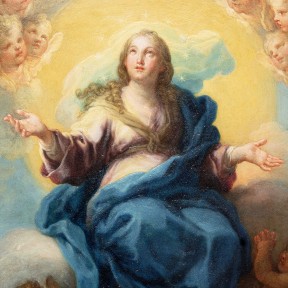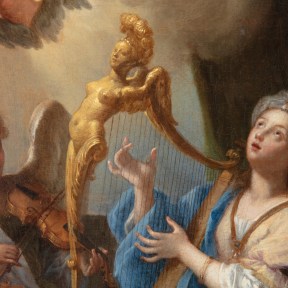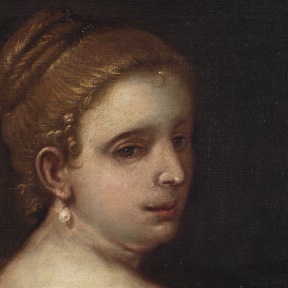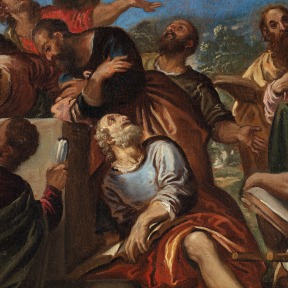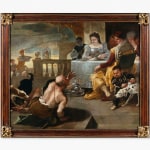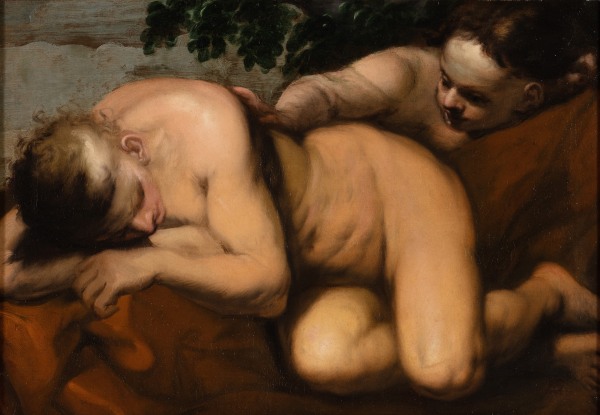-
Biografie
Luca Giordano (Neapel, Italien 1634 – Neapel, Italien 1705)
Er wurde 1634 in Neapel als Sohn des Malers Antonio Giordano geboren. Bereits 1650 ging er bei dem spanischen Maler Jusepe de Ribera in die Lehre, der seine frühen Werke stark beeinflusste.
Wegen der außergewöhnlichen Geschwindigkeit, mit der er seine Werke vollendete, trug er auch den Spitznamen "Luca Fapresto" (Luca mach es schnell). Sein produktives Schaffen umfasste zahlreiche Themen, die von allen wichtigen malerischen Tendenzen des 17. Jahrhunderts beeinflusst wurden.
Die erste künstlerische Phase des neapolitanischen Malers war dem Stil von Caravaggio und dem Naturalismus von Jusepe de Ribera sehr ähnlich. Nach einer Studienphase in Rom, Parma und Venedig vollzog sich ein tiefgreifender Stilwandel. Er gab das nüchterne Drama zugunsten eines dekorativen Ansatzes auf und versucht, venezianische und römische Einflüsse zu vereinen.
Als etablierter Dekorateur erhielt er zahlreiche und prestigeträchtige Aufträge aus Florenz und Neapel.
Im Jahr 1692 wurde er von Karl II. nach Spanien eingeladen und blieb zehn Jahre lang in den Diensten des Königs.
Nach dem Tod von Karl II. kehrte er 1702 nach Neapel zurück. Er erhielt so viele Aufträge, dass er ein Atelier eröffnete. Helfer und Mitarbeiter entwickelten Zeichnungen und Skizzen des Meisters weiter oder vollendeten von ihm begonnene Werke. In anderen Fällen griff Giordano mit wenigen Pinselstrichen in von Schülern ausgeführte Arbeiten ein.
Die letzten in Auftrag gegebenen Gemälde zeigen eine Rückkehr zum Helldunkel seiner frühen Tage.
Er starb 1705 in Neapel.
Foto UniCredit Group (Sebastiano Pellion di Persano)
-
Kunstwerke
Luca Giordano Italienisch, 1634-1705
La cena del ricco Epulone, 1663Oil on canvas / Olio su tela / Öl auf Leinwand78 x 95 1/4 in
198 x 242 cmUniCredit S.p.A.Foto: UniCredit Group (Sebastiano Pellion di Persano)Weitere Abbildungen
Join Our Mailing List
* denotes required fields
Um Ihre Anfrage zu beantworten, verarbeiten wir die von Ihnen übermittelten personenbezogenen Daten gemäß unserer Datenschutzerklärung.



